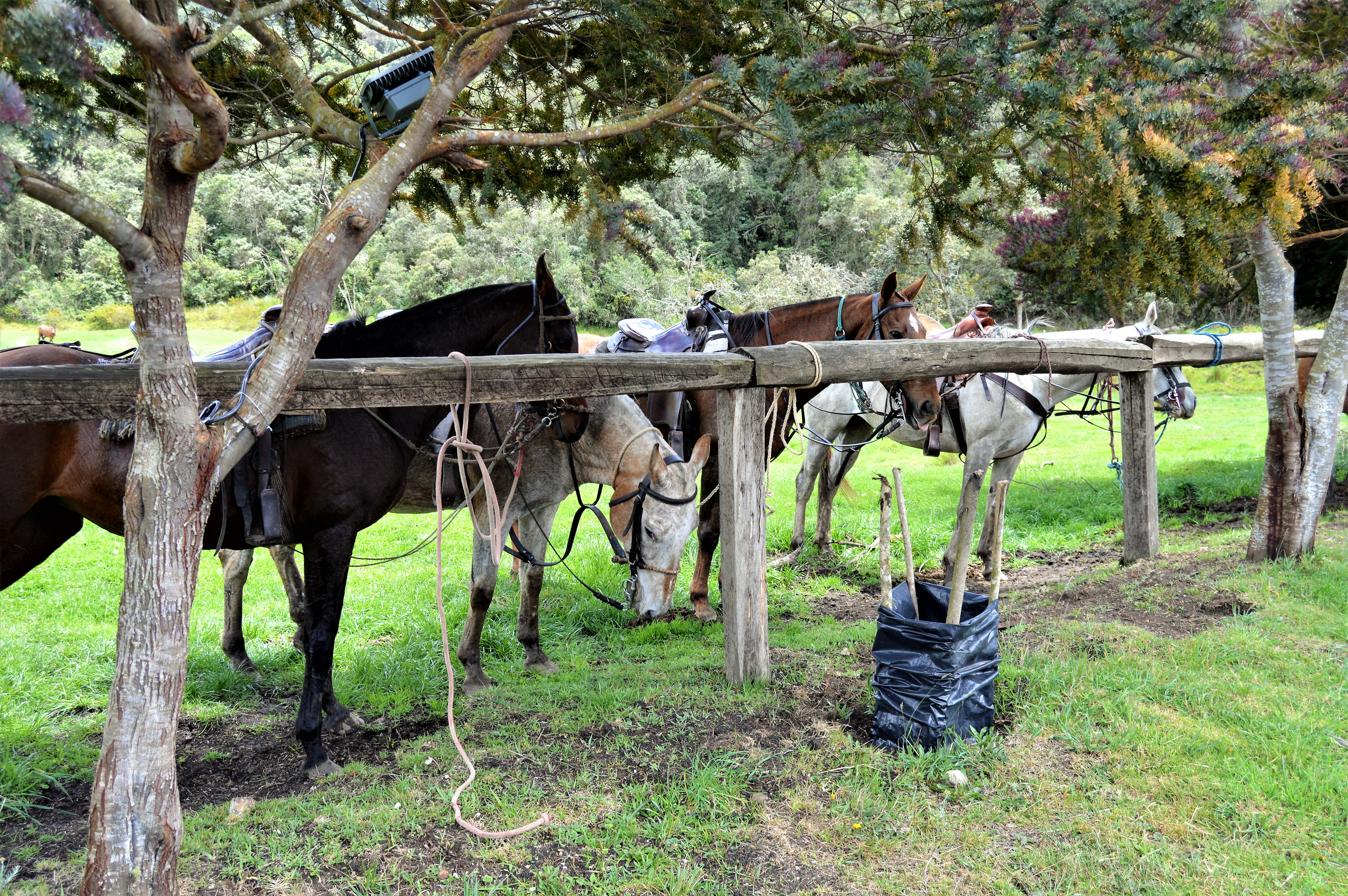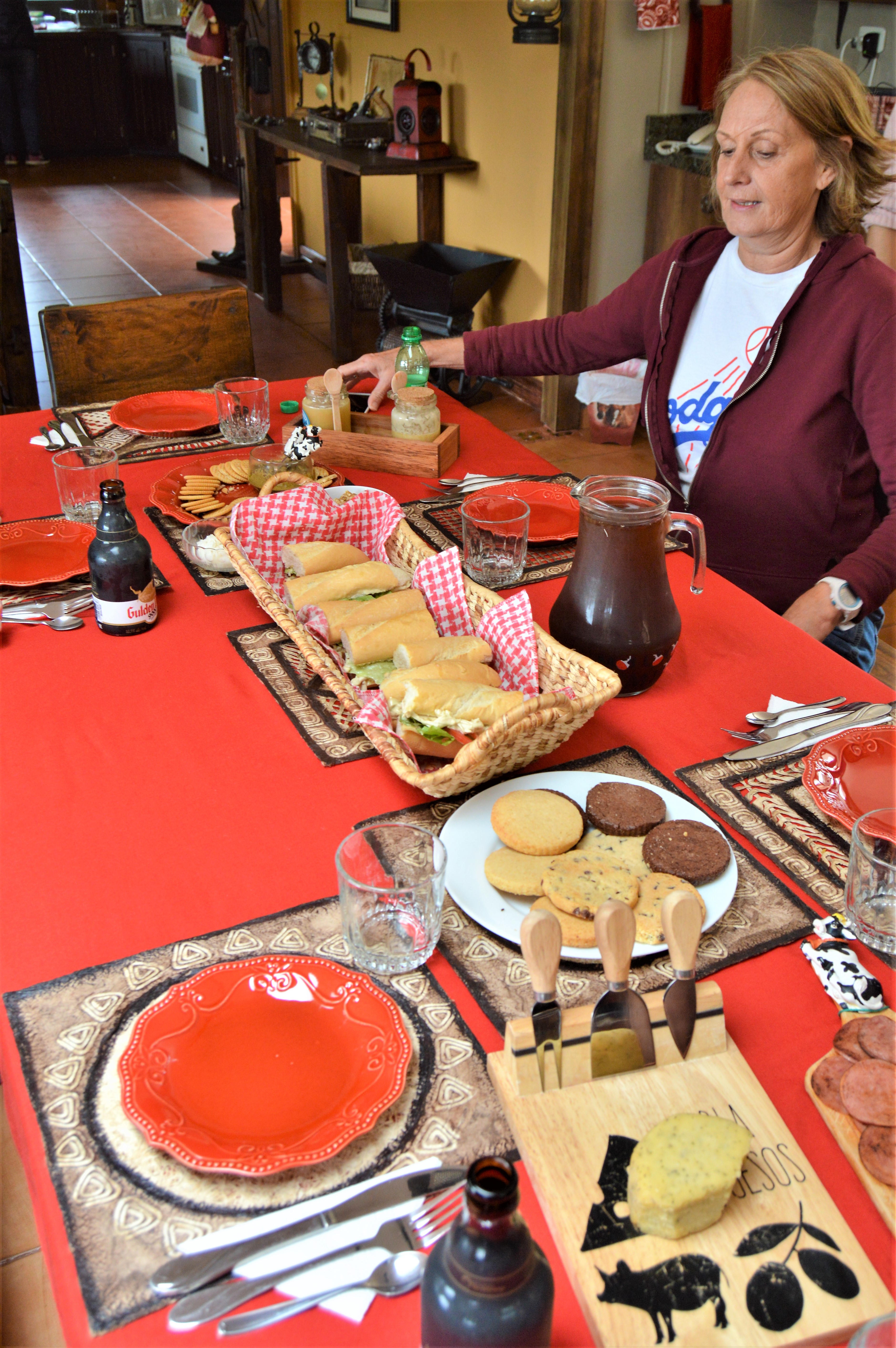Queen of Cuenca
I couldn’t help myself.
“Ciao mi reyna,” I whisper, gently kissing her soft, powdered cheek. Cecilia Toral’s long, slender fingers grasp my hand. Her sparkling gray eyes find mine, and we share an unspoken regret at parting. She purses her rose-lipsticked lips.
“Hasta luego,” she answers, pulling me in for a hug.
 Our group had just spent nearly two hours under the spell of one of Cuenca’s reigning matriarchs. Toral has lived all 72 years of her life in one spot – a majestic mansion on Calle Larga, one of Cuenca’s busiest avenues.
Our group had just spent nearly two hours under the spell of one of Cuenca’s reigning matriarchs. Toral has lived all 72 years of her life in one spot – a majestic mansion on Calle Larga, one of Cuenca’s busiest avenues.
Most of us have passed by the elaborately decorated stucco home. A few of us may have stopped in the “Sumaglia Folklor Antiguedades” – an antique shop on the ground floor. Even fewer have paid $2 and continued up the stairs to inspect one of Cuenca’s most famous patrimonial homes.


While Toral has preserved every inch of her portion of the 120-year-old family home as it was, she is saddened it is no longer intact. Half of the home – where Toral was born – was handed down another side of the family that sold it off in 1952. Still, the 42 rooms under her care are a time machine. The home is one of the best-known hanging houses along La Barranca, facing the Tomebamba River.
Toral receives our group in a sitting room like a queen, as her attendants silently slip away. She is simply dressed, wearing black pants, a turquoise sweater and gray suede shoes. She wears no jewelry. Bits of gray frame her elegantly styled red hair, and as she speaks, she absently shoves a wisp behind her ear with a single, manicured nail.
 The matriarch comes from a long line of local “royalty.” Her relatives include Cuenca founder Remigio Crespo. Her father was accountant Homero Moscoso and Adolfo Vázquez Moreno was her great grandfather. On her mother’s side, her great-grandfather was a senator and her grandfather was a banker.
The matriarch comes from a long line of local “royalty.” Her relatives include Cuenca founder Remigio Crespo. Her father was accountant Homero Moscoso and Adolfo Vázquez Moreno was her great grandfather. On her mother’s side, her great-grandfather was a senator and her grandfather was a banker.
She sweeps a delicate hand across the room, pointing out antiques and artifacts from long ago. She is particularly proud of the tin walls and ceilings imported from Germany in the mid-1800s, when the house was built.
The home was furnished by her grandparents from countries all over the world. We admire German tile work and furniture from France and Austria. The original handmade glass, blemishes and bubbles intact, grace most windows. Delicate chandeliers from Holland are original, although retrofitted for electricity. French wallpaper adorns some walls; an Ecuadorian mural is splashed across another. There are 19th century trunks pushed under elegant tables, all used for family travel years ago.
Every piece has a story and Toral is eager to share her past.
Briefly married in 1973 to a man from Holland, Toral recalls meeting her husband-to-be. She was 33 and working in the family antique shop on the ground floor off Calle Larga. Her father introduced her to the dashing archaeologist who flew around the world to various digs. It was love at first sight, she assures us with twinkling eyes. He was generous and loving, and they married after knowing each other for only six months. Sadly, he died soon after in an airplane accident in the Himalayas.
Toral ran the antique shop for 40 years. A majority of the items were from her father’s collection of archeological treasures. She inherited four rooms full of these, although she never understood them. In the late ’60s, she also studied the business of museums. She directed the Las Conceptas museum and also El Centro de Reconversión in Cuenca.
She lives alone and rarely has visitors, although she still has a sister, as well as a daughter and two grandchildren. Her only brother died at 64 of lung cancer.
Someone asks if she has visited the United States. In a soft voice, she begins naming the states she has seen – in English. She also speaks a little Italian, she says, and that reminds her of her first trip to Europe.
For a moment, you glimpse the 20-something girl she must have been, courageous, outgoing and maybe, a tiny bit mischievous. In a group of more than a dozen friends, Toral traveled through Italy. She dressed as a chola Cuencana, she says, grinning, and even purchased a wig with two braids in Italy to complete the look. She received her first kiss in Italy, met Pope Paul VI and opened “four boxes” of champagne along the way, she adds.
She is ready for a reprieve and waves us into the dining room to explore on our own. She reminds us to look at the carved chest from Holland that once held all the family’s silver. The murals in the room are not that old, she says, painted in the 1920s.
Toral is already seated in the ornate living room overlooking Calle Larga when our group makes it there. The walls feature gold leaf floral patterns and the ceiling is clad with brass plates. There are dolls and nativities, paintings and mirrors, 19th century furniture and an old English rug, all filling the air with a sort of reverence.
“Our home was built during the Republican period of architecture,” Toral says, referring to the period between 1860 and 1940. “People were tired of Spanish influence” and sought out French and other European touches.
She describes the original French curtains, delicately framing the windows, and points out a crystal chandelier from Venice. It is original too, she says, “but of course we converted it from candles to electricity.”
Of course.
Cuenca did not receive electricity until 1910. But the family’s home was among the first to gain service.
 She remembers cooking being done on a wood stove and taking baths in a tub brought from France. Along with the family, four servants lived in the home, and several more came in during the day. The only animals in the house were dogs, and a photo of her favorite – Oso – holds a prominent place among the framed family photographs.
She remembers cooking being done on a wood stove and taking baths in a tub brought from France. Along with the family, four servants lived in the home, and several more came in during the day. The only animals in the house were dogs, and a photo of her favorite – Oso – holds a prominent place among the framed family photographs.
Our group prepares to leave – at least twice – but is quickly drawn into a new tale. Toral sits erect, seemingly energized by her inquisitive guests as she holds court.
“I don’t go out very much,” she acknowledges, “but I love El Mercado,” she says of the Calle Larga institution just down the street. She enjoys the corvina – without sauce – and just a tiny bit of wine. Her eyes are gleaming as she holds up two fingers to demonstrate how much she will drink.
“Any more than that, and I would be…Oh!” she laughs, shaking her head and throwing both hands up into the air
The queen embarks on a mini-lesson on how to enjoy wine. She holds an unseen glass and her thin hand flutters above it, guiding an imaginary aroma toward her nose. She takes a sip, then another. “Drink it slowly, and eat appetizers. Never toss it back,” she says.
 Someone asks what her favorite experience has been and she doesn’t miss a beat.
Someone asks what her favorite experience has been and she doesn’t miss a beat.
“Traveling. I have always been friendly and very curious.”
Another question is posed by our tour leader.
“How many boyfriends have you had?”
She grins at the man’s naïve impertinence. “That’s a question you don’t ask.”
 We all laugh and Toral giggles. It seems like a good time to end our visit. We all rise reluctantly.
We all laugh and Toral giggles. It seems like a good time to end our visit. We all rise reluctantly.
I can’t help myself. “Ciao mi reyna,” I whisper. Hasta pronto. Until we meet again.






















 Inside, we were offered coffee, tea and a restroom break. A collection of cowboy hats was laid out for our choosing.
Inside, we were offered coffee, tea and a restroom break. A collection of cowboy hats was laid out for our choosing.

 The horses sauntered through the hushed countryside. Occasionally, we encountered smiling residents working their fields or tending their houses. Once a pack of dogs disturbed our solitude, but the ponies were left unfazed. We took a shortcut up a mountainside through a lovely wooded grove. We paused at lookouts over unendingly verdant valleys. We chatted and we marveled – in silence – at the gift of unblemished nature.
The horses sauntered through the hushed countryside. Occasionally, we encountered smiling residents working their fields or tending their houses. Once a pack of dogs disturbed our solitude, but the ponies were left unfazed. We took a shortcut up a mountainside through a lovely wooded grove. We paused at lookouts over unendingly verdant valleys. We chatted and we marveled – in silence – at the gift of unblemished nature. We were fortunate to have Sebastian as our guide. He shared memories of growing up on horses and his current passion for rodeo riding. A former bull rider, he now is more interested in roping and steer wrestling. He hopes to gather interest for local rodeos soon.
We were fortunate to have Sebastian as our guide. He shared memories of growing up on horses and his current passion for rodeo riding. A former bull rider, he now is more interested in roping and steer wrestling. He hopes to gather interest for local rodeos soon. Yes, we all had a case of the “short legs” upon return. There is something about riding a horse that makes you feel like you have lost half your height when you slide off. I noticed pain in places I never experienced as a young girl, riding bareback in the Southwest. OK, it’s true that I am three times older than that young girl now, but still…
Yes, we all had a case of the “short legs” upon return. There is something about riding a horse that makes you feel like you have lost half your height when you slide off. I noticed pain in places I never experienced as a young girl, riding bareback in the Southwest. OK, it’s true that I am three times older than that young girl now, but still…



 The time comes to leave this idyllic setting. Our bodies are sore, our stomachs full and our souls are singing. It was an incredible journey. I will be back.
The time comes to leave this idyllic setting. Our bodies are sore, our stomachs full and our souls are singing. It was an incredible journey. I will be back. For information on horseback riding, contact Jane at laureles108@protonmail.com 097 907 2087 or find Rancho Patococha on Facebook.
For information on horseback riding, contact Jane at laureles108@protonmail.com 097 907 2087 or find Rancho Patococha on Facebook.